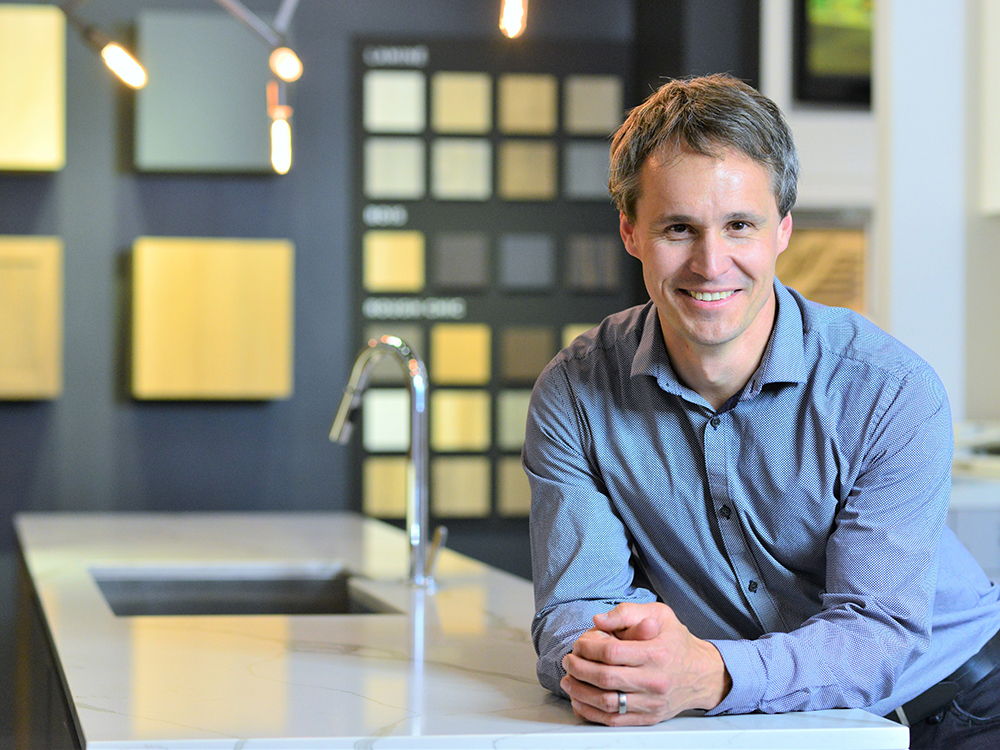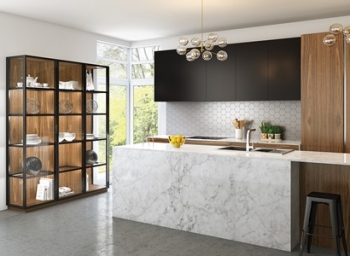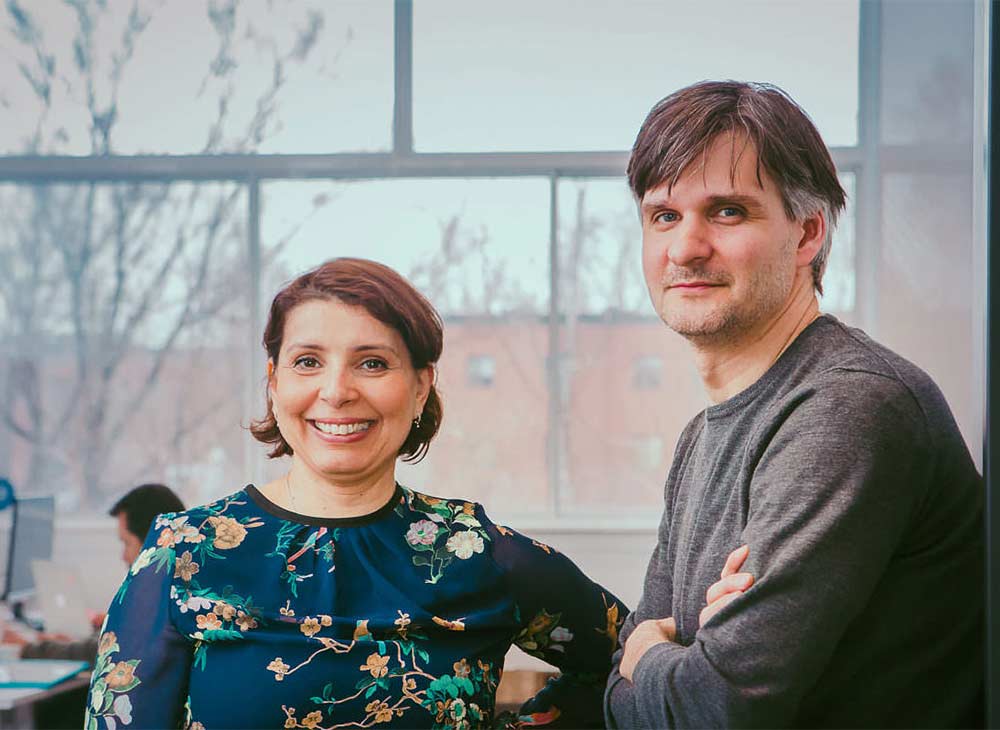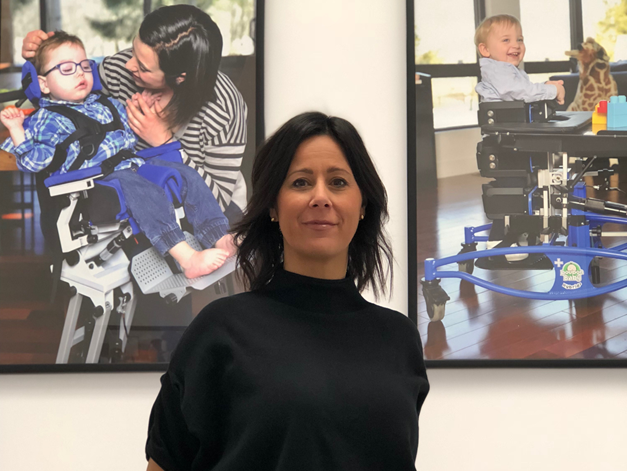
Miralis: Bringing innovation to the production line
Daniel Drapeau’s Story
Daniel Drapeau always had an entrepreneurial spirit. “At 15, I had a store selling sports equipment,” he recalls. From that time forward, he knew that one day he would own his own business and that he would return to his birthplace in in the Lower St-Lawrence region.
A few years passed without his being able to find a business idea or feel like he was ready to start something. Nevertheless, he set himself three professional challenges to help him reach his goal: Learn English, get solid management experience and make it big in business. So for the next 12 years or so he worked for Telus in Montreal in the telecommunications field.
Answering the call
By the time he was nearly 30, he had accomplished all three challenges. At that point, he started telling his friends that he wanted to go back to Rimouski.
“One of my friends told me about Miralis and its owner, Jean-Paul Lauzier, who was in his sixties and was looking for a successor for his kitchen cabinet–making business in Saint-Anaclet-de-Lessard,” he explains.
He took the time to really consider the purchase, particularly since the decision involved moving.
“I also wanted to get involved in an organization that was producing something concrete after my more abstract experience working in telecommunications,” emphasizes the CEO.
He returned to his place of birth and began working at Miralis in January 2007 as managing director, where he learned the basics of a line of business he had no prior understanding of.
A worthwhile repositioning
Two years later, the owner left the company and handed over the reins to Drapeau and four other employees. In the meantime, the management team considered Miralis’s future, given that the economic context the company was operating in was not bright.
“We made a bold decision to split off the kitchen cabinet component division, which represented 70 percent of our revenue, but which was unbranded,” says Drapeau. “At the same time, we developed our kitchen cabinet design department, which represented 30 percent of our offering.”
This switch, effected around 2010, was based on strategic thinking. “There were no innovation opportunities with components, while with kitchens, the field was practically unlimited, allowing us to explore a range of styles and designs.”
The results proved the move was worthwhile, given the niche now has a compound annual growth rate of 16.5%.
During that same period, the company’s leaders also noticed a trend toward contemporary kitchens which hadn’t yet arrived in North America, with a few exceptions. “We were the first to propose an integrated offering and Quebecers were the first to adopt the new contemporary kitchens. They now represent 60 percent of our kitchens.”
Innovation isn’t just a word
Drapeau and the other managers also wanted the company to be driven by innovation, and not just in terms of using the word as one of their stated values. To that end, a research and development team was put in place.
“You have to be a kind of two-headed monster so that, on the one hand, there’s a team that ensures your everyday performance that will pay for your innovation projects, and on the other hand have people thinking about our future.”
Daniel Drapeau
They also implemented the “36-2-1” innovation principal, which aims to measure Miralis’s innovation on an annual basis. “Every year, we perform 36 product evolutions, as well as two innovations that follow a trend or improve on one, and generate volume,” he explains. “Lastly, we introduce an invention to the market that our competitors don’t have and we take the risk of marketing it.”
It's a measure that appeals to Miralis’s retailers, who are guaranteed innovative future products from the company year after year. “They see us as trendsetters, and we always try to associate some kind of logic with them so they don’t become just a passing fad,” explains Drapeau. “Bringing an innovation to market takes two years of work and it has to be a commercial success that lasts five, seven or 10 years.”
A good example of such a breakthrough innovation is Curio, a permanent glass-front cabinet launched two years ago that can be integrated into any lifestyle, and which is part of a new niche being developed by the company. “We went to various shows in Italy for inspiration and noticed one year a few glass cabinets, then a few more in later years, so we recognized there was a trend.”
Innovation is found not just in their products, but in the company’s processes, which have been automated and robotized over time. These changes haven’t led to a loss of jobs, but instead have allowed employees to evolve into less repetitious, more stimulating tasks. What’s more, the number of employees has tripled since the takeover in 2009.
Sights set on North America
Half of the company’s revenue comes from Quebec. Ontario and the United States (generally the East Coast) generate the other half, with 30 percent and 20 percent respectively. However, those last two markets have undergone faster growth than that of Quebec.
Although they would like to continue to focus on North America, the management team are currently considering a way to export their expertise to other markets, both in terms of their brand and their factory processes. “We really believe we can have an effect on this industry, which hasn’t really evolved in recent years.”
Miralis in Numbers
- 30: Percentage of Miralis’s revenue attributed to innovation, whether in terms of capital, machinery or software
- 300: Number of employees
- $7.4 M: Investment in robotics and automation for the factory production line
WANT TO LEARN MORE?
Visit Miralis’s website



